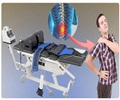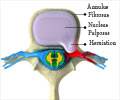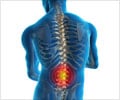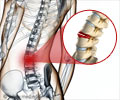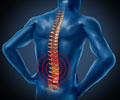- Cauda equina syndrome - (https://radiopaedia.org/articles/cauda-equina-syndrome)
- More Information on Cauda equina syndrome - (https://rarediseases.info.nih.gov/diseases/10987/cauda-equina-syndrome)
- Definitions of traumatic conus medullaris and cauda equina syndrome: a systematic literature review. - (https://www.ncbi.nlm.nih.gov/pubmed/28534496)
- Early intervention in cauda equina syndrome associated with better outcomes: a myth or reality? insights from the nationwide inpatient sample database 2005-2011. - (https://www.ncbi.nlm.nih.gov/pubmed/28456676)
- About Cauda Equina Syndrome - (http://columbiaspine.org/condition/cauda-equina-syndrome/)
- Know About Cauda Equina Syndrome - (http://orthoinfo.aaos.org/topic.cfm?topic=a00362)
- The long term outcome of micturition, defecation and sexual function after spinal surgery for cauda equina syndrome. - (https://www.ncbi.nlm.nih.gov/pubmed/28423044)
- Pain medications - narcotics - (https://medlineplus.gov/ency/article/007489.htm)
- What is Cauda Equina Syndrome? - (http://www.aans.org/en/patients/neurosurgical-conditions-and-treatments/cauda-equina-syndrome)
What is Cauda Equina Syndrome?
Cauda equina syndrome (CES) is a serious condition that occurs due to the compression of the nerves and nerve roots at the lower end of the spinal cord.The cauda equina contains the nerve roots of the lumbar [1-5] and the sacral [1-5] regions.
The term cauda equina is derived from the words “caudal” meaning a tail and “equine” meaning horse. The spinal cord ends in the lumbar area and continues as spinal nerves. Because of its resemblance to a horse's tail, this collection of nerves towards the end of the spinal cord is called the cauda equina. These nerves send and receive messages to and from the legs and pelvic organs.
Cauda equina syndrome occurs when the nerve roots in the lumbar spine are compressed, cutting off sensation and movement. Nerve roots that control the function of the bladder and bowel are especially vulnerable to damage.
Injury or compression of the cauda equina leads to sciatica, severe low back pain, bladder and bowel incontinence, difficulty in walking, and motor and sensory loss in the legs. It is considered a surgical emergency and quick action is needed to prevent lasting damage such as paralysis of the legs, loss of sexual sensation, and bladder and bowel incontinence. Even with immediate treatment, some patients may not recover complete function.
There is an estimated 80 % and 70% sensory loss in the saddle area and the lower legs respectively.
Cauda Equina Syndrome (CES) is classified into:
- Incomplete(CES-I) that accounts for 40 % of cases. There is loss or absence of sensation in the area of the buttocks, perineum and inner surfaces of the thighs [saddle region].
- Cauda Equina Syndrome with retention (CES-R) that accounts for 60 % of cases. In this case along with impaired sensation there is urinary retention or incontinence.
Interesting Facts About Cauda Equina Syndrome
The worldwide occurrence of cauda equina syndrome (CES) is approximately 1 in 67000.
CES occurs mostly in adults though it can occur in children who have a spinal injury or spinal
What are the Causes and Risk Factors of Cauda Equina Syndrome (CES)?
- Herniation of lumbar intervertebral disc – causing compression of cauda equina is the most common cause
- Narrowing of the spinal canal (stenosis) - due to spinal disc herniation, osteoporosis, a tumor, trauma or a congenital condition
- Tumors - such as ependymomas [slow growing and usually benign growths on the lining of the spinal cord and parts of the brain], malignant and metastatic tumors, and Paget disease
[abnormal destruction and regrowth of bone leading to deformity of bone] near the spine may put pressure on the spinal canal - Trauma to the lumbar spine -such as in a car crash, fall, or a penetrative injury can damage the cauda equina
- Congenital - such as arteriovenous malformation
- Inflammatory conditions - such as ankylosing spondylitis
- Infections - such as epidural abscess, Pott's disease [tuberculosis of spine]
- Postoperative complications from lumbar surgery - A small number of patients experience cauda equina syndrome following surgery to repair a lumbar herniated disc
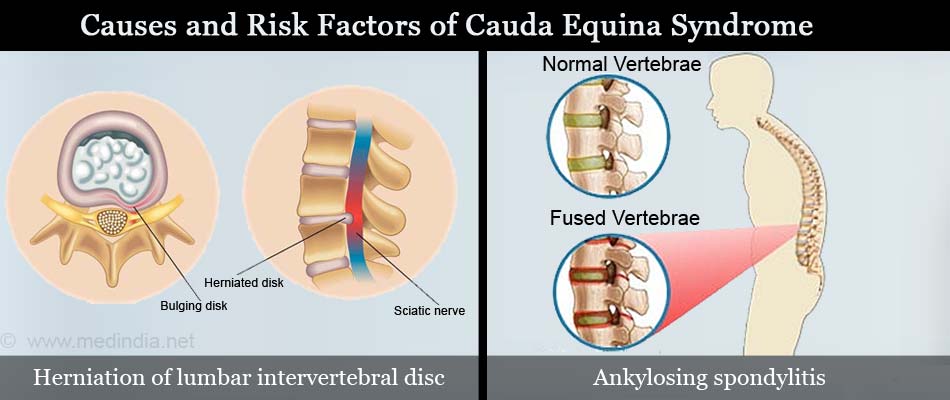
Risk factors include:
- Obesity
- Labor intensive work
- Spinal canal stenosis, either congenital or acquired
- Recent surgery of lumbar spine
- Nicotine research suggests that smokers have a 3 to 4 times greater risk of developing degenerative disc disease [DDD] and that smoking can exacerbate pre-existing disc degeneration.
What are the Symptoms of Cauda Equina Syndrome?
Symptoms of cauda equina syndrome mostly develop suddenly, but may also take weeks or months.
- Severe low back pain
- Loss or altered sensation in saddle area and legs (saddle anesthesia) - Severe or progressive loss of sensation in the lower extremities, perineum, genitalia, buttocks, the inner thighs and legs
- Weakness in legs leading to difficulty in standing and walking. This type of weakness is often asymmetric
- Bladder and bowel dysfunction such as retention or incontinence of urine and feces. There may be repeated urinary infections due to retention
- Sexual dysfunction such as impotence, loss of ejaculation or orgasm that happens suddenly
- Loss of reflexes such as knee, ankle, anal and bulbocavernosus (a muscle of the perineum)
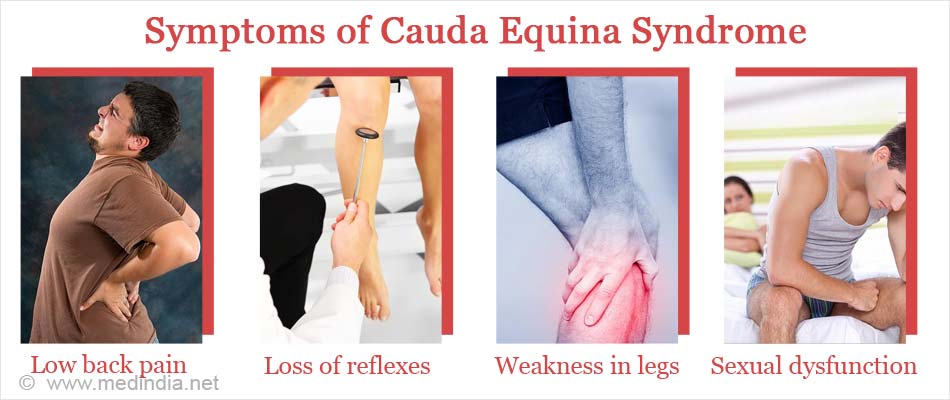
How do you Diagnose Cauda Equina Syndrome?
- Detailed medical history to determine exact cause
- Physical examination to assess strength, reflexes, movement and sensation of affected part
- Magnetic resonance imaging (MRI) - is the best method of imaging the spinal cord, nerve roots, intervertebral discs, and ligaments. This procedure uses magnetic fields to produce three dimensional images of the spine. MRIs are valuable in diagnosing the cause of cauda equina syndrome as these scans can detect damage or disease of soft tissue

- Myelogram- is an X-ray of the spinal canal after injection of a contrast agent into the cerebrospinal fluid to evaluate the spinal cord, nerve roots and spinal lining (meninges). It is useful for assessing the spine following surgery and for assessing disc abnormalities in patients who cannot undergo MRI. Displacement of spinal cord or nerves due to herniated discs, bone spurs, and tumors can be imaged
- A computed tomography (CT) scan is invaluable in diagnosing and treating spinal problems as it can help detect bony tissue as well as surrounding tissues such as muscle and blood vessels. It is also performed to guide needle in brain or spinal tissue biopsy
- Electromyography (EMG) for specialized nerve testing of the lower extremities and perineum
How do you Treat Cauda Equina Syndrome?
Short term management of cauda equina includes:
- Lumbar laminectomy - which is a surgical decompression procedure to provide immediate relief and prevent permanent dysfunction of bladder, bowels and legs
- Antibiotics to treat infection
- Tumor removal - with follow up radiotherapy or chemotherapy for cancerous tumors
Long-term management of cauda equina syndrome depends on symptoms persisting after surgical decompression and in inflammatory or demyelinating conditions. These include:
Pain killers - such as opiates (Codeine, Oxycodone ) may be needed as the severe pain in cauda equina syndrome does not respond to other pain killers

- Bladder control with drugs such as oxybutynin. Self-catheterization is needed if the bladder is unable to empty. Often pads may need to be worn in the underwear to protect against leakage of urine
- Improve bowel control and assist bowels to empty as the sensation in the rectum is diminished and the propulsive action reduced. Using a laxative on a regular basis, eating a high fiber diet and maintaining a good fluid intake are useful measures which can be helpful
- Physiotherapy and exercises to improve muscle tone and strengthen muscles, provided there is no inflammatory component like arachnoiditis in which case exercise may exacerbate the condition
- Counseling for persons suffering from sexual problems and those unable to cope with this debilitating illness. Loss of sexual function can be devastating to the sufferer and may lead to relationship difficulties and depression. Loss of bladder and bowel control can be extremely distressing and have a highly negative impact on social life, work and relationships
- A brace may be needed if there is a foot drop
- Blood circulation may be improved by warm oil massage. Raynaud’s syndrome is a condition where areas like the fingers and toes start to feel numb and cold when exposed to cold temperatures. Preventive measures for Raynaud's syndrome like avoiding getting cold feet have to be taken in order to prevent inflammation of small blood vessels.
What is the Prognosis for Caudal Equina Syndrome?
The prognosis for cauda equina syndrome depends on how promptly the nerve is decompressed and the extent of nerve damage at the time of surgery.
Early intervention has a higher likelihood of improved outcomes. The odds of getting better are higher with incomplete CES.
Studies demonstrate that dysfunction of micturition, defecation and sexual function are still highly prevalent in a large number of CES patients even years postoperatively. Hence doctors should inform their patients more realistically about long term postoperative outcomes after surgical intervention.


